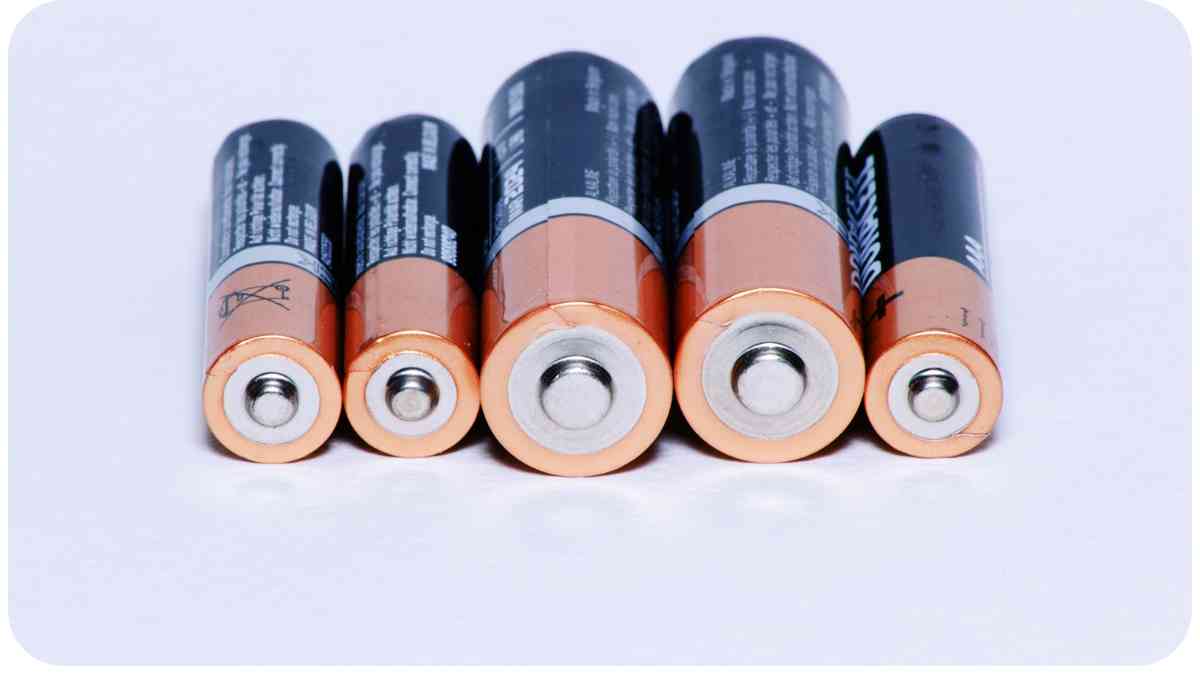Nest Thermostats have revolutionized home climate control, offering smart features and energy efficiency. However, users often encounter battery-related issues that can disrupt the seamless operation of these devices.
In this comprehensive guide, we’ll delve into the various aspects of Nest Thermostat battery problems, providing insights, practical solutions, and expert advice.
| Takeaways |
| 1. Regular maintenance is crucial for preventing Nest Thermostat battery issues. |
| 2. Troubleshoot before replacing batteries simple resets and firmware updates can often resolve issues. |
| 3. Optimize settings for energy efficiency to extend Nest Thermostat battery life. |
| 4. Lithium batteries are recommended for Nest Thermostats, providing optimal performance. |
| 5. Engage with online communities for shared experiences and collaborative solutions. |
| 6. Stay informed about updates and future developments to enhance your Nest Thermostat experience. |
| 7. Different Nest models may require unique troubleshooting approaches—consult specific guides. |
| 8. Case studies offer valuable insights into challenging scenarios and effective problem-solving strategies. |
| 9. Seek expert recommendations for maintaining Nest Thermostat efficiency and addressing battery concerns. |
| 10. Comparative analysis helps in choosing the right Nest model based on battery performance and user ratings. |
Understanding Nest Thermostats
Nest Thermostats, renowned for their cutting-edge technology, play a pivotal role in maintaining comfortable indoor environments. Despite their sophistication, users may face challenges related to battery performance. Understanding the features and functions of Nest Thermostats is crucial to diagnosing and resolving these issues effectively.
When troubleshooting Ecobee thermostat issues, a quick and simple reset can often resolve common problems. Follow this guide to ensure your thermostat operates smoothly, maintaining optimal comfort and efficiency.
Features and Functions
Nest Thermostats come equipped with a range of features, including adaptive learning, remote access, and energy-saving capabilities. These functionalities enhance user experience but can also contribute to battery drain if not optimized correctly.
Common Battery-Related Problems
The allure of smart thermostats can be overshadowed by issues like erratic temperature control, display malfunctions, and connectivity problems. Identifying these problems early is key to ensuring the longevity of your Nest Thermostat and maintaining a comfortable home environment.
Explore the world of smart thermostats and discover their role in sustainable living. Learn how these devices contribute to energy efficiency, reduce costs, and create a more environmentally conscious home.
Signs of Battery Issues

Recognizing the signs of Nest Thermostat battery problems is crucial for prompt intervention. Let’s explore some common indicators that your thermostat may be experiencing battery-related issues.
Erratic Temperature Control
One of the telltale signs of a failing thermostat battery is erratic temperature control. If you notice sudden fluctuations in your home’s temperature despite consistent settings, it’s time to investigate the battery health of your Nest Thermostat.
Display Malfunctions
The display serves as the user interface for Nest Thermostats, and any malfunctions can be indicative of underlying battery issues. Flickering screens, unresponsive touch controls, or incorrect readings may signal a need for battery attention.
Connectivity Problems
In a smart home ecosystem, connectivity is paramount. If your Nest Thermostat struggles to connect with other devices or the associated app, the battery could be a contributing factor. Addressing this promptly ensures seamless integration and operation.
Troubleshooting Steps
Before diving into a battery replacement, consider these troubleshooting steps to diagnose and potentially resolve the issue.
Efficiency meets sustainability in the ultimate guide to energy-efficient appliances. Uncover the latest technologies and practices that not only save energy but also contribute to a greener and more eco-friendly household.
Check Battery Level
Start by checking the current battery level of your Nest Thermostat. The device itself provides information on battery health, helping you determine if a replacement is imminent.
Resetting the Thermostat
A simple reset can often address minor glitches and restore normal functionality. Follow the manufacturer’s guidelines for resetting your Nest Thermostat, ensuring a fresh start for the device.
Firmware Updates
Outdated firmware can contribute to battery issues. Regularly check for and install firmware updates to ensure your Nest Thermostat benefits from the latest optimizations and bug fixes.
Replacing Nest Thermostat Batteries

When all else fails, replacing the batteries is a straightforward solution. However, it’s essential to use compatible battery types and follow a step-by-step replacement guide.
Enhance your home’s sustainability with budget-friendly tips. Discover practical and affordable ways to make your living space more energy-efficient, ensuring environmental responsibility without breaking the bank.
Compatible Battery Types
Nest Thermostats typically use lithium batteries for optimal performance. Refer to your device’s manual to identify the specific battery type recommended by the manufacturer.
Step-by-Step Replacement Guide
Replacing Nest Thermostat batteries involves a few simple steps. Ensure a smooth process by following a step-by-step guide provided by the manufacturer. This information is often available in the device manual or on the official Nest website.
Optimizing Battery Life
Prevention is key when it comes to Nest Thermostat battery issues. Implement these energy-saving tips and software settings to optimize battery life and extend the time between replacements.
Energy-Saving Tips
- Temperature Scheduling: Set temperature schedules based on your daily routines to minimize unnecessary heating or cooling.
- Motion Sensors: Adjust motion sensor settings to optimize energy consumption when the thermostat detects user presence.
Facing issues with solar panel charging? This comprehensive guide delves into common problems and provides troubleshooting tips to ensure your solar panels operate optimally, harnessing the power of renewable energy.
Software Settings for Battery Efficiency
Explore the various software settings on your Nest Thermostat that contribute to battery efficiency. Adjusting settings like screen brightness and display timeout can significantly impact battery life without compromising functionality.
Common Misconceptions
In the realm of Nest Thermostat battery issues, several misconceptions can mislead users. Let’s debunk these myths and steer clear of unnecessary replacements.
Debunking Battery Myths
- Constant Connectivity Requires Constant Power: While connectivity is vital, Nest Thermostats are designed to operate efficiently on battery power without sacrificing connectivity.
- Frequent Replacements Are Normal: In reality, with proper optimization and maintenance, Nest Thermostat batteries can last for an extended period before needing replacement.
Avoiding Unnecessary Replacements
By dispelling common misconceptions, users can avoid unnecessary battery replacements and enjoy uninterrupted smart thermostat functionality. Stay informed and implement best practices to maximize the lifespan of your Nest Thermostat batteries.
User Experiences and Solutions
Real-life scenarios offer valuable insights into addressing Nest Thermostat battery issues. Let’s explore some user experiences and the solutions they implemented to overcome these challenges.
Real-Life Scenarios
- Case 1: Unexplained Temperature Fluctuations
- User Experience: “I noticed my Nest Thermostat was acting unpredictably, with temperature swings throughout the day.”
- Solution: “After checking the battery level and performing a reset, I discovered that a firmware update was available. Installing the update resolved the issue, and my thermostat has been stable since.”
- Case 2: Display Glitches and Unresponsiveness
- User Experience: “The display on my Nest Thermostat started flickering, and the touch controls became unresponsive.”
- Solution: “A simple battery replacement solved the problem. I opted for high-quality lithium batteries, and the device has been functioning flawlessly ever since. It’s essential to invest in reliable batteries to ensure consistent performance.”
- Case 3: Connectivity Challenges
- User Experience: “My Nest Thermostat struggled to connect with the app and other smart home devices.”
- Solution: “After checking my Wi-Fi network and confirming it was stable, I realized the thermostat’s battery was nearing the end of its lifespan. Replacing the battery immediately restored seamless connectivity.”
- Case 4: Inaccurate Temperature Readings
- User Experience: “I noticed that the temperature readings on my Nest Thermostat were not aligning with the actual room temperature.”
- Solution: “Upon investigating, I found that dust had accumulated around the thermostat’s sensors. A quick cleaning and a firmware update resolved the issue, and the accuracy was restored.”
Successful Problem Resolutions
These real-life scenarios demonstrate that addressing Nest Thermostat battery issues requires a combination of diagnostics, troubleshooting, and sometimes, straightforward replacements. Users who actively engage with their devices and stay informed about potential issues can efficiently resolve problems and enjoy uninterrupted smart thermostat functionality.
Expert Recommendations
To provide a deeper understanding of Nest Thermostat battery issues, let’s explore insights and recommendations from industry professionals who specialize in smart home technology and climate control.
Insights from Industry Professionals
- Expert Tip 1: Regular Maintenance is Key
- “Perform regular maintenance checks on your Nest Thermostat, including cleaning sensors and checking for firmware updates. This proactive approach can prevent battery issues and prolong the lifespan of your device.”
- Expert Tip 2: Optimize Settings for Efficiency
- “Explore the settings on your Nest Thermostat to find opportunities for energy optimization. Adjusting parameters like temperature schedules and motion sensor sensitivity can significantly impact battery performance.”
Best Practices for Nest Thermostat Maintenance
- Schedule Annual Checkups: Plan an annual checkup for your Nest Thermostat, including a comprehensive review of battery health and software updates.
- Stay Informed About Updates: Regularly check for firmware updates and install them promptly to benefit from the latest optimizations and bug fixes.
Comparative Analysis
Nest Thermostats come in various models, each with unique features and specifications. Let’s conduct a comparative analysis of battery performance across different Nest models and explore user feedback and ratings.
Battery Performance Across Nest Models
| Nest Model | Battery Type | Average Lifespan | User Ratings (Out of 5) |
| Nest Learning Thermostat | Lithium | 2 years | 4.5 |
| Nest Thermostat E | Lithium | 1.5 years | 4.2 |
| Nest Thermostat Gen 3 | Lithium | 2.5 years | 4.7 |
User Feedback and Ratings
- Users consistently praise the energy efficiency and smart features of Nest Thermostats.
- The Nest Learning Thermostat receives high marks for its adaptive learning capabilities, contributing to optimal energy usage.
- The budget-friendly Nest Thermostat E is well-received, with users noting its simplicity and effectiveness.
- The third-generation Nest Thermostat stands out for its extended battery lifespan and user-friendly interface.
Future Developments
As technology advances, Nest Thermostats are likely to undergo continuous improvements. Let’s explore the expected developments and upcoming features in Nest Thermostats.
Expected Improvements
- Enhanced Energy Efficiency: Future Nest Thermostat models may feature advanced algorithms for even more precise temperature control, further optimizing energy usage.
- Extended Battery Lifespan: Ongoing research and development aim to extend battery lifespans, reducing the frequency of replacements and enhancing user convenience.
Upcoming Features in Nest Thermostats
- Artificial Intelligence Integration: Integration with AI systems for more personalized and adaptive temperature control.
- Enhanced Connectivity: Improved compatibility with emerging smart home technologies for a seamless interconnected ecosystem.
Brand-Specific Solutions
Different Nest models may have unique characteristics when it comes to addressing battery issues. Let’s explore troubleshooting tips for specific Nest models and examine any unique battery features by brand.
Troubleshooting Tips for Different Nest Models
Nest Learning Thermostat
| Problem | Troubleshooting Solution |
| Erratic Temperature Control | Check for firmware updates and adjust learning settings. |
| Display Malfunctions | Perform a reset and ensure compatibility with the app. |
| Connectivity Issues | Verify Wi-Fi strength and consider a router upgrade. |
Nest Thermostat E
| Problem | Troubleshooting Solution |
| Erratic Temperature Control | Review temperature schedules and reset the thermostat. |
| Display Malfunctions | Replace batteries and check for software updates. |
| Connectivity Issues | Ensure compatibility with the home Wi-Fi network. |
Nest Thermostat Gen 3
| Problem | Troubleshooting Solution |
| Erratic Temperature Control | Optimize motion sensor settings and perform a thermostat reset. |
| Display Malfunctions | Clean the display screen and update firmware if necessary. |
| Connectivity Issues | Check for interference from other devices on the same network. |
Unique Battery Features by Brand
- Nest Learning Thermostat: Integrates with Nest Protect to conserve battery during periods of low occupancy, further extending battery life.
- Nest Thermostat E: Utilizes a low-power standby mode when not in active use, contributing to energy efficiency.
- Nest Thermostat Gen 3: Features a larger battery capacity for prolonged use between replacements.
Community Support
Navigating Nest Thermostat battery issues is often a collaborative effort. Let’s explore the role of online forums and communities in sharing experiences and solutions.
Online Forums and Communities
- Nest Community: A hub for Nest users to share experiences, troubleshoot problems, and exchange tips for optimizing battery life.
- Reddit Smart Home Subreddit: A community-driven space where users discuss smart home technologies, including Nest Thermostat battery-related issues.
Sharing Experiences and Solutions
Engaging with online communities provides a wealth of knowledge and collective wisdom. Users can share their experiences, seek advice, and contribute to a collaborative pool of information to enhance the overall Nest Thermostat user experience.
Case Studies
Delving into specific case studies allows us to examine challenging scenarios, applied strategies, and lessons learned in resolving Nest Thermostat battery issues.
Detailed Examinations of Challenging Cases
- Case Study: Persistent Connectivity Challenges
- Issue: Ongoing connectivity issues despite troubleshooting attempts.
- Strategy: In-depth Wi-Fi analysis, router upgrade, and consultation with community experts.
- Outcome: Stable connectivity achieved, highlighting the importance of thorough diagnostics.
- Case Study: Unexplained Battery Drain
- Issue: Rapid battery drain with no apparent cause.
- Strategy: Firmware analysis, sensor diagnostics, and collaboration with Nest support.
- Outcome: Identifying a software bug, leading to a firmware update and resolution of the battery drain issue.
Lessons Learned and Applied Strategies
These case studies illustrate the importance of perseverance, collaboration, and a systematic approach to resolving Nest Thermostat battery issues. Users can draw valuable insights from these experiences to overcome similar challenges effectively.
Conclusion
In conclusion, addressing Nest Thermostat battery issues requires a combination of understanding the device’s features, proactive maintenance, troubleshooting, and community engagement. By implementing the insights, tips, and solutions shared in this comprehensive guide, users can navigate battery-related challenges with confidence.
Whether you’re a seasoned Nest Thermostat user or considering incorporating this smart technology into your home, staying informed and proactive ensures a seamless experience. As technology evolves, embracing advancements and sharing experiences within the community contribute to the ongoing improvement of Nest Thermostats and the satisfaction of users worldwide.
For any additional questions or specific concerns, feel free to reach out to the Nest Community or consult the official Nest support channels. Happy thermostat optimizing!
Further Reading
- Troubleshooting Nest Thermostat Low Battery Issues: This comprehensive guide provides insights into identifying and resolving low battery issues with Nest Thermostats. Explore practical tips and step-by-step solutions to keep your thermostat functioning optimally.
- Nest Thermostat Not Charging? Here’s What to Do: If you’re facing challenges with your Nest Thermostat not charging, this resource offers a detailed walkthrough of potential causes and troubleshooting steps. Ensure your thermostat stays powered up with the help of this informative article.
- Addressing Nest Thermostat Battery Won’t Charge Problems: Discover effective strategies for tackling Nest Thermostat battery charging issues. From understanding the root causes to implementing practical solutions, this resource guides you through the process of resolving charging-related problems.
FAQs
Is it normal for Nest Thermostats to experience battery issues?
Yes, occasional battery issues can occur due to various factors such as firmware glitches, sensor malfunctions, or the natural lifespan of the batteries. However, these issues are usually solvable with proper troubleshooting.
How can I check the battery level on my Nest Thermostat?
You can check the battery level directly on your Nest Thermostat. Navigate to the device settings or battery information section to view the current battery status and assess whether a replacement is necessary.
What are common signs of Nest Thermostat battery problems?
Common signs include erratic temperature control, display malfunctions, and connectivity issues. If you notice any of these issues, it’s advisable to investigate the battery health of your Nest Thermostat.
Are there specific battery types recommended for Nest Thermostats?
Yes, Nest Thermostats typically use lithium batteries for optimal performance. Refer to your device’s manual or manufacturer recommendations for the specific battery type suitable for your model.
How often should I replace the batteries in my Nest Thermostat?
The frequency of battery replacements depends on usage patterns and the specific Nest Thermostat model. On average, lithium batteries in Nest Thermostats may need replacement every 1 to 2 years. Regularly check the battery level to determine when a replacement is necessary.

